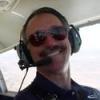Fuel Selector stuck in flight! M20K-231
-
Members Online
- boboxa9895
- Barneyw
- KSMooniac
- bruce.m
- Fix
- Aerospace
- GeeBee
- billy hellcat
- mooniac58
- Marc_B
- TCC
- DJE22
- eman1200
- RonnieBurg
- jrwilson
- exM20K
- Vance Harral
- Aaviationist
- Ethan
- Matthew P
- ElkoRandy20J
- Danb
- PT20J
- bigmo
- Ragsf15e
- shawnd
- acekng1
- hammdo
- IvanP
- Parker_Woodruff
- Perri Dyer
- Jim F
- pkellercfii
- flyfast
- Jake@BevanAviation
- Tommooney
- 47U
- EricJ
- varlajo
- blaine beaven
- mluvara
- Robm


Recommended Posts
Join the conversation
You can post now and register later. If you have an account, sign in now to post with your account.